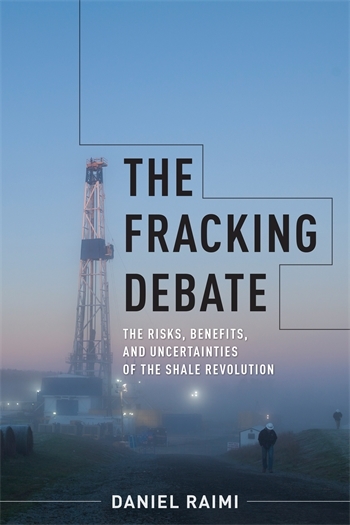James Rodger Fleming: Geoengineering's Checkered Past
April 22 was Earth Day, and in honor of the occasion, we will be running a series of posts over the course of this week by authors of our environmental studies titles. These articles will cover a wide range of topics relevant to the study of the earth and the environment, from global climate change to the effects of economic development on the environment in China.
Professor James Rodger Fleming, author of Fixing the Sky: The Checkered History of Weather and Climate Control and a professor of science, technology, and society at Colby College, is a fellow of the American Association for the Advancement of Science (AAAS), elected “for pioneering studies on the history of meteorology and climate change and for the advancement of historical work within meteorological societies,” and a fellow at the American Meteorological Society.
Geoengineering’s Checkered Past
James Rodger Fleming
Geoengineering, loosely defined as the intentional large-scale manipulation of the global environment, exists only in the fevered brains of those who propose it. It is “geo-scientific speculation” practiced by the Rube Goldbergs and Doctor Strangeloves who reside in a fantasy world of back-of-the-envelope calculations, simplistic computer models, and PowerPoint slides outlining outrageous proposals: build artificial volcanoes, open fire on the stratosphere with sulfate cannons, launch massive arrays of space mirrors to dim the sun, genetically engineer crops with more reflective leaves, or splash huge buckets of white paint on the cities of the world. The roots of geoengineering lie deep in the mythical quest to control nature, and its advocates exude a strange mix of overconfidence and hubris.
America’s first national meteorologist, James Espy, was a geoengineer, proposing to burn the forests of the Appalachian Mountains to enhance rainfall and clear the air along the East coast. He made an appearance in 1843 in Nathaniel Hawthorne’s “Hall of Fantasy,” a marketplace of wild ideas or “Twilight Zone” where the rulers and demigods of imagination—Homer, Plato, Dante, Milton, Goethe—are memorialized. Here are social reformers, second Adventists, and starry-eyed engineers whose madness is contagious. Here are inventors of fantastic machines aimed to “reduce daydreams to practice” — distilling machines for capturing heat from moonshine and for condensing morning mist into square blocks of granite, and a lens for making sunshine out of a lady’s smile. Professor Espy was here too, reminiscent of Aeolus, the god of the winds, with a tremendous storm in his gum-elastic bag.
Over a century after Espy, the United States and the Soviet Union conducted geoengineering trials aimed at possibly weaponizing Earth’s electrical and magnetic environment. Project Argus detonated three atomic bombs in space in 1958 to see if the newly discovered Van Allen radiation belt could be disrupted. Four years later a massive high-altitude hydrogen bomb test, Starfish Prime, and similar Soviet tests, demonstrated the possibility of knocking out enemy incoming missiles or satellites with a space burst, disrupting radio communications in times of emergency, and creating a damaging electromagnetic pulse (EMP) over enemy targets. Enthusiasm for nukes in space was widespread but short-lived, peaking during the Cuban Missile Crisis of 1962 and ending with the Limited Test Ban a year later. The manipulation of the Magnetosphere during the Cold War constituted geoengineering on a planetary scale, even if was not aimed, as it is today, at climate change concerns.
That geoengineering has a checked past is quite revealing and quite relevant. Our current knowledge of planetary processes, including climatic change, solar radiation “management,” and other forms of climate manipulation, is still quite primitive, and the utopian ideas are quite dangerous. Hawthorne’s Hall of Fantasy is still open, with plenty of room for the modern geoengineers.
Sources:
James Rodger Fleming, Fixing the Sky: The Checkered History of Weather and Climate Control. New York: Columbia University Press, 2010.
James Rodger Fleming, “Iowa Enters the Space Age: James Van Allen, Earth’s Radiation Belts, and Experiments to Disrupt Them.” Annals of Iowa 70 (Fall 2011), 301-24.






